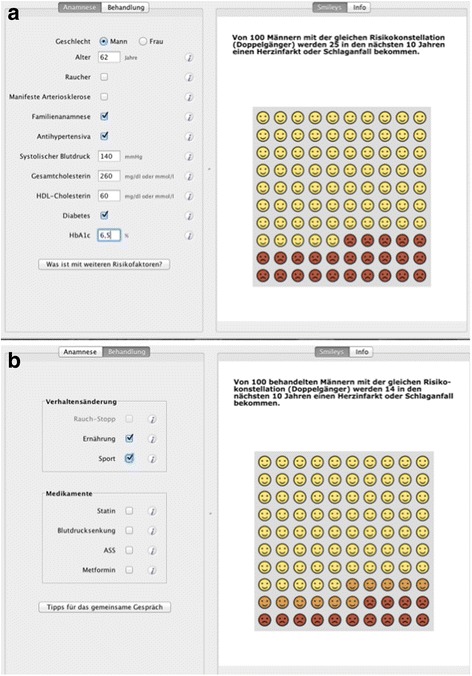Fig. 2.

Emoticon-interface of the arribaTM decision-aid (a Medical history taking1, b visualization of treatment options2)
Footnote:
1On the left, information regarding the medical history must be filled in, which is (from top to bottom): gender, age, smoking-status, presence of manifest arteriosclerosis, positive family history, taking of antihypertensive medications, systolic blood pressure, total cholesterol level, high density lipoproteins (HDL) level, presence of diabetes, HbA1c level.
On the right, the emoticons are displayed, accompanied by the following headline: “Out of 100 men with the same risk profile, 25 will suffer a myocardial infarction or stroke within the next 10 years.”
2On the left, the treatment options are shown, which are (from top to bottom): behavioral changes, like smoking cessation, nutrition, sports and on the other hand drug treatment, i.e. statins, antihypertensive drugs, aspirin, metformin.
On the right, the emoticons are displayed, accompanied by the following headline: “Out of 100 treated men with the same risk profile, 14 will suffer a myocardial infarction or stroke within the next 10 years.”
The risk reduction (here due to nutrition modification and sports) is indicated with orange-colored emoticons
